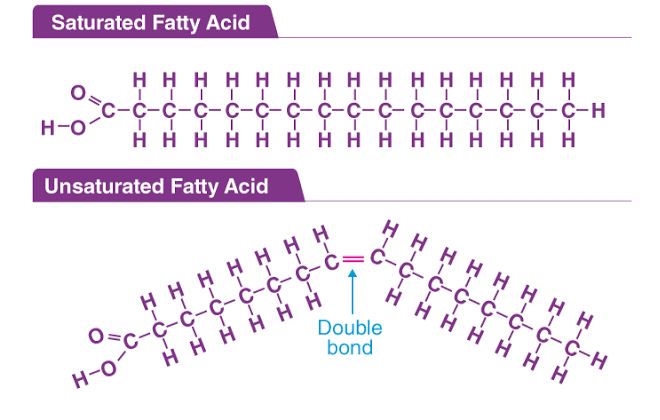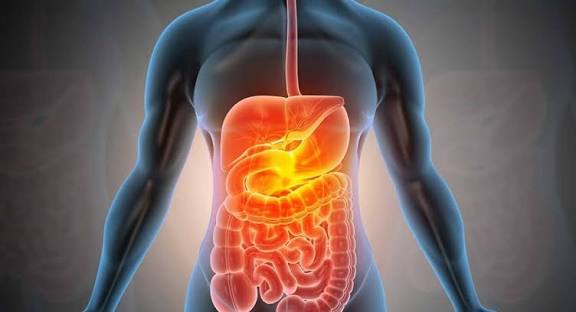
Definition of Fatty Acids
Fatty acids are carboxylic acids with long hydrocarbon chains. They are key components of lipids, which are essential biomolecules in living organisms. Fatty acids can be saturated or unsaturated, depending on the presence of double bonds between carbon atoms in their hydrocarbon chains. They play crucial roles in energy storage, cellular structure, and signaling processes.
Structure of Fatty Acids
The structure of fatty acids consists of two main parts:
- Hydrocarbon Chain: This is a long chain made up of carbon (C) and hydrogen (H) atoms. The length of the chain can vary, typically ranging from 4 to 36 carbon atoms.
- Carboxyl Group (-COOH): At one end of the hydrocarbon chain, there is a carboxyl group that gives fatty acids their acidic properties. The general formula for a fatty acid can be represented as R-COOH, where R represents the hydrocarbon chain.
Fatty acids can be classified based on the number of double bonds present in their hydrocarbon chains:
- Saturated Fatty Acids: These have no double bonds between carbon atoms and are fully saturated with hydrogen atoms.
- Unsaturated Fatty Acids: These contain one or more double bonds. They can be further classified into:
- Monounsaturated Fatty Acids (MUFA): Contain one double bond.
- Polyunsaturated Fatty Acids (PUFA): Contain two or more double bonds.
Classification of Fatty Acids Based on Saturation and Nutrition
Fatty acids can be classified based on saturation and nutritional significance:
Saturation
- Saturated Fatty Acids (SFAs):
- Examples include palmitic acid (C16:0) and stearic acid (C18:0).
- Typically solid at room temperature and found in animal fats and some plant oils.
- Unsaturated Fatty Acids:
- Monounsaturated Fatty Acids (MUFAs):
- Example: Oleic acid (C18:1).
- Found in olive oil, avocados, and nuts.
- Polyunsaturated Fatty Acids (PUFAs):
- Omega-3 fatty acids (e.g., alpha-linolenic acid) and omega-6 fatty acids (e.g., linoleic acid).
- Found in fish oils, flaxseeds, walnuts, and certain vegetable oils.
- Monounsaturated Fatty Acids (MUFAs):
Nutritional Classification
- Essential Fatty Acids: These cannot be synthesized by the body and must be obtained through diet. Examples include omega-3 (alpha-linolenic acid) and omega-6 (linoleic acid).
- Non-Essential Fatty Acids: These can be synthesized by the body from other nutrients.
Functions of Fatty Acids
Fatty acids serve several critical functions in biological systems:
- Energy Storage: They are stored as triglycerides in adipose tissue and serve as a major energy source during periods of fasting or low carbohydrate intake.
- Cell Membrane Structure: Phospholipids containing fatty acids form cell membranes, providing structural integrity and fluidity.
- Signaling Molecules: Certain fatty acids act as precursors to bioactive lipids that participate in signaling pathways involved in inflammation, immunity, and cell growth.
- Nutrient Absorption: Dietary fats facilitate the absorption of fat-soluble vitamins (A, D, E, K).
Clinical Significance of Fatty Acids in Health and Disease
The clinical significance of fatty acids is profound due to their roles in various health conditions:
- Cardiovascular Health:
- High intake of saturated fats has been linked to increased LDL cholesterol levels, raising cardiovascular disease risk.
- Conversely, omega-3 PUFAs have been shown to reduce inflammation and lower heart disease risk.
- Metabolic Disorders:
- Imbalances between omega-6 and omega-3 fatty acids may contribute to obesity-related inflammation and insulin resistance.
- Neurological Health:
- Omega-3 fatty acids are crucial for brain health; they have been associated with improved cognitive function and reduced risk for neurodegenerative diseases like Alzheimer’s.
- Inflammatory Conditions:
- Certain fatty acids possess anti-inflammatory properties that may help manage conditions such as arthritis or inflammatory bowel disease.
- Cancer Risk:
- Some studies suggest that diets high in certain types of fats may influence cancer risk; for instance, omega-3s may have protective effects against certain cancers.
In summary, understanding the structure, classification, functions, and clinical significance of fatty acids is essential for appreciating their role in nutrition and health management.







